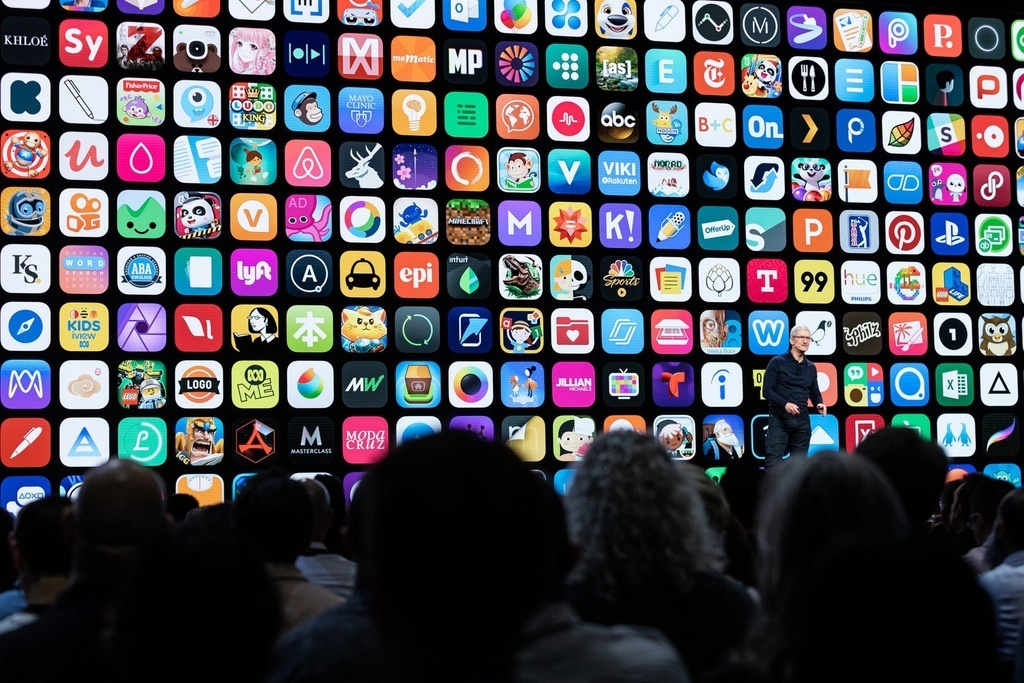If you are running a business, you should know that being part of the internet makes your business grow faster and more robust.
The pandemic almost ruined everything for many businesses but made it a matter of survival for companies to go offline to online.
Not only did the internet offer this way of survival, but it also created opportunities for startups to enter e-commerce, healthcare, finance, and many other industries merely by developing a mobile application.

During 2020-2021 trends were popping out, and it was and still is continuing to be hard to follow them, and why not become a new trend. Developing an Android or iPhone mobile application is a basic task for developers, but creating it through the latest mobile app trends and becoming a new trend could be tedious.
Mobile app technology trends reveal app users’ expectations and technologies in demand in the industry in the upcoming time. So this is the part where developers brainstorm and try to create an app that is prepared to demand in the sector; chances for this app to succeed are higher.
Nowadays, you should keep in mind that an effective mobile strategy involves more than just a mobile-friendly website. To be in the first line of trends, you must know what helps you be in that line. Below you can find some trends which will determine the future of mobile app development.

1. WEARABLE DEVICES
In the last decade, we have noticed massive popularity in wearable technology, including smartwatches, activity trackers, and smart clothing.
Wearable devices have become a trend since both customers and companies are wearing various devices for various applications. Wearable technologies allow us to monitor our fitness levels, track our GPS location, and view text messages.
These devices are hands-free and portable, eliminating the need to take our devices out of our pockets, bags, and purses.
Wearable devices are connected to our smart devices, transmitting the information to them and allowing us to view it.
From nonexistent to being everywhere, wearable devices are among the top trends and innovative types of technology.

2. M – COMMERCE
M-commerce is one of the significant influencers that accelerate business growth. Mobile commerce brings a simple, accessible, and user-friendly shopping experience to the customers.
Mobile commerce can also be used as a method to enhance overall revenue and increase the customer base.
The studies show that consumers surf the internet via their phones more than they do with their computers. The mobile is a pocket-friendly device that is available 24/7 for any individual.
3. MOTION AND LOCATION SENSING
Today, most mobile phones have location sensor capabilities that use multiple positioning methods to provide different location data granularities.
Motion sensing apps are used and very much needed in security, anti-theft, power-saving, and games. Motion-sensing is exceptionally used by fitness applications, which help capture an individual-jumping, running, or walking activities. Having this motion can also determine your heart rate.
And location sensing is helpful in Geotagging, Games, Vehicle navigation, and fitness apps.

4. INNOVATIVE MOBILE USER EXPERIENCE DESIGN
Mobile app designers create solutions to meet mobile users’ requirements and restrictions. A business app to remain popular needs to display data and content on its mobile user interface for a sound user experience.
An innovative mobile user experience design should give users what they want and need – fast results with minimal effort.
Designers nowadays are creating apps that can accommodate mobile challenges, such as partial user attention and interruption.
Apps should exploit technologies with novel features such as interactive content layers, circular design patterns, cards, and content manipulation.
5. APPLICATION PERFORMANCE MANAGEMENT (APM)
Application Performance Management is a monitoring software suite comprising digital experience monitoring, application discovery, tracing and diagnostics, and purpose-built artificial intelligence for IT operations.
It provides visibility into app behavior to determine which app features are being successfully exploited.
With the application landscape and enterprise infrastructures shifting to the cloud, APM tools face increased challenges to provide genuine performance benefit across systems with virtual parameters. Modern enterprises require robust mechanisms to monitor resources used by applications, correlate that data with meaningful user insights, and align performance with business processes.

Mobile applications using the latest technology and trends have become an integral element of the digital ecosystem.
It requires a lot of effort, work, and enthusiasm to create and maintain a business application that wants to be on top of trends for a long time. All businesses should keep close attention to these trends and many more others that help design a great mobile application.


